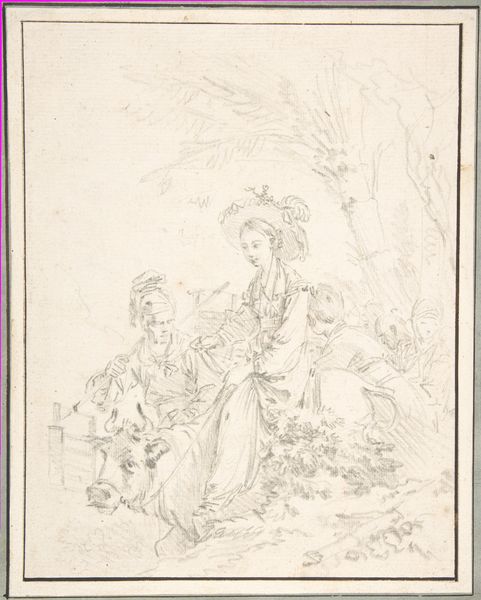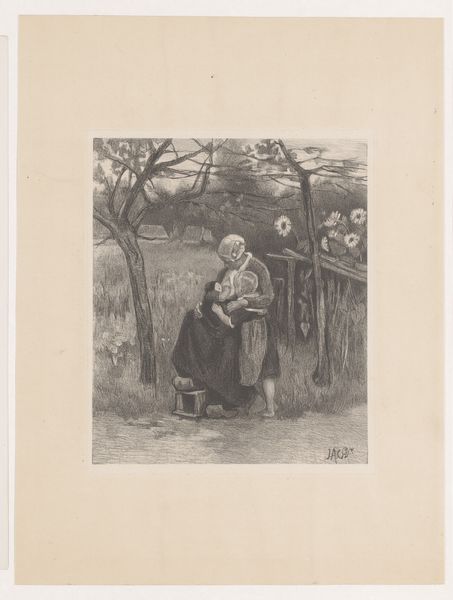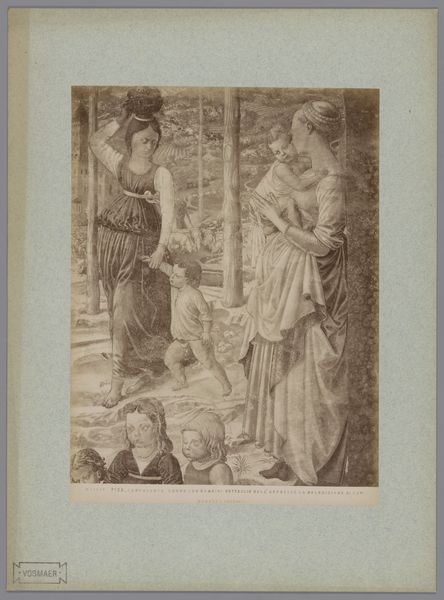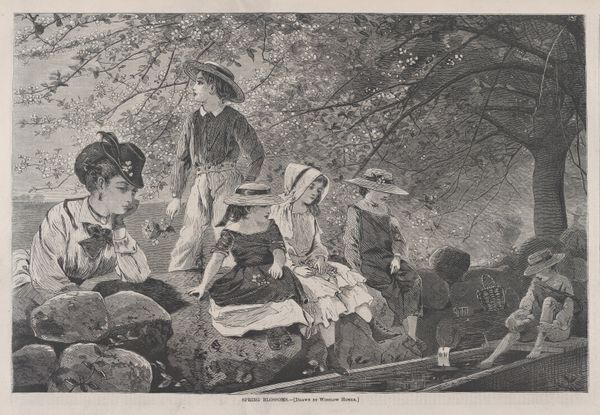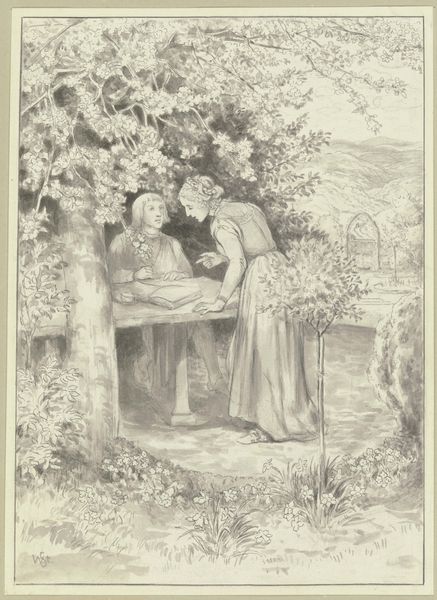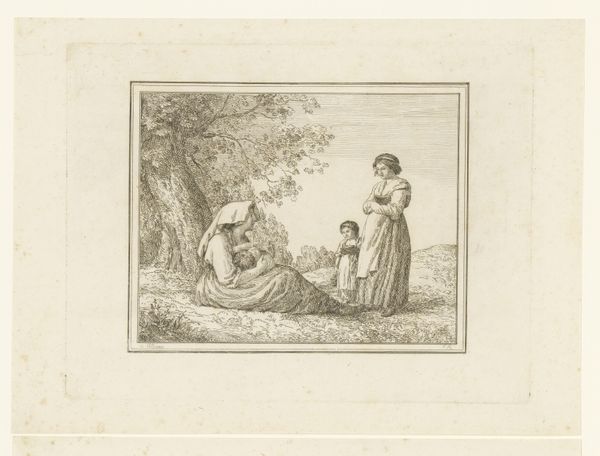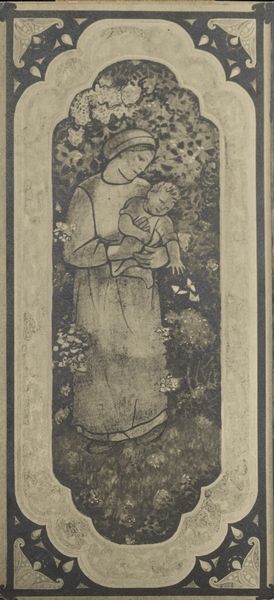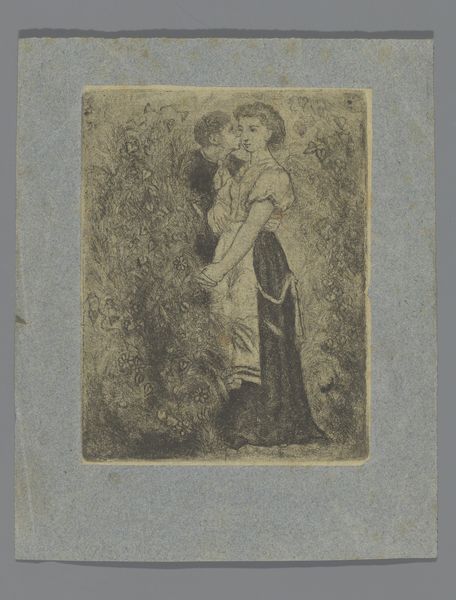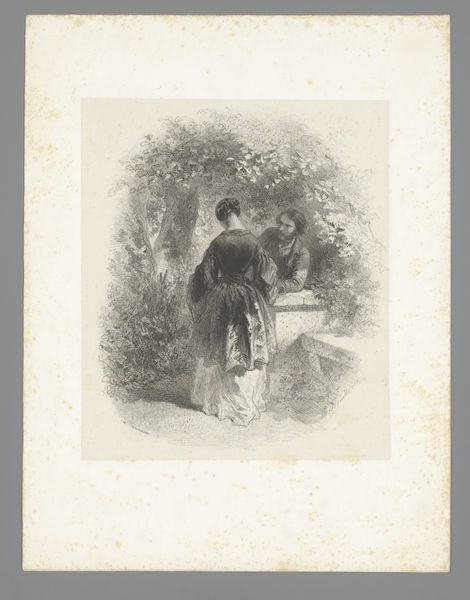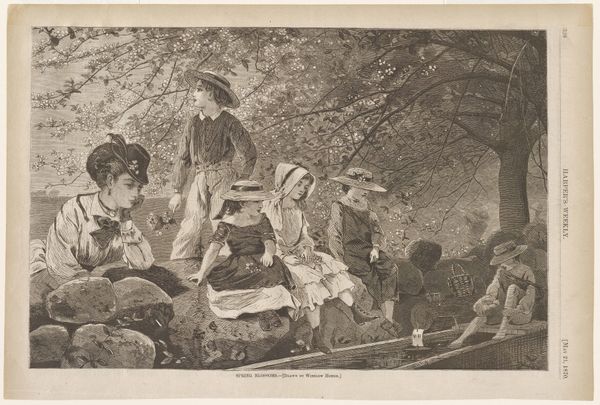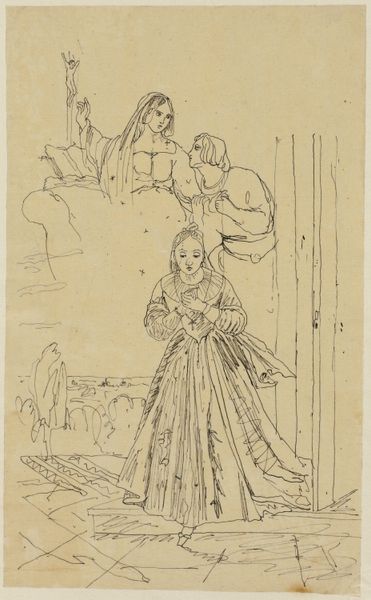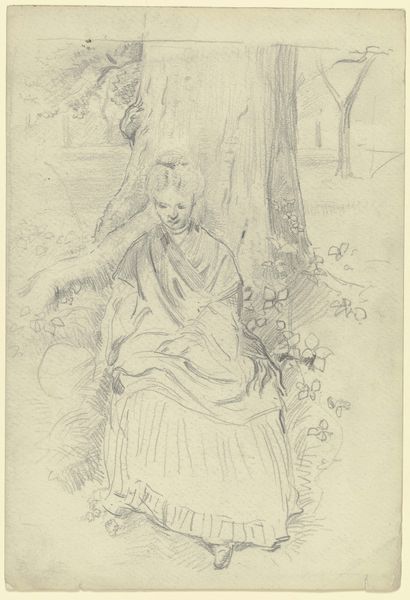
Fotoreproductie van (vermoedelijk) een tekening getiteld 'Gretchen en haar zusje' 1879
0:00
0:00
drawing, pencil, charcoal, pastel
#
drawing
#
narrative-art
#
pencil sketch
#
charcoal drawing
#
coloured pencil
#
pencil
#
genre-painting
#
charcoal
#
pastel
#
northern-renaissance
Dimensions: height 140 mm, width 95 mm, height 172 mm, width 172 mm
Copyright: Rijks Museum: Open Domain
Editor: This is a reproduction of a drawing, supposedly titled 'Gretchen en haar zusje', dating back to 1879. It looks like pencil and maybe charcoal were used. I'm immediately struck by how sentimental and, dare I say, idealized the image feels. What can you tell me about this piece? Curator: Sentimentality is definitely a lens through which to examine this piece, particularly within the context of 19th-century European society. Reproductions like this, making art accessible, also helped spread certain ideals about childhood and sisterhood, but whose ideals were these? This image promotes ideas of domesticity and innocence. How do you think that intersects with the expectations placed upon women and girls during this period? Editor: That's a great point. I see how the focus on domesticity reinforces traditional gender roles, confining women to the private sphere. Were there artistic counter-movements challenging these norms at the time? Curator: Absolutely. While sentimental genre scenes were popular, artists like the Impressionists and Realists were exploring different perspectives on modern life, sometimes challenging those very societal expectations. Now look at the composition. What do you notice about the power dynamics at play here between the sisters? Is there anything unsettling? Editor: I see the older sister reaching out to the younger one, almost presenting her with something, but the younger sister's doll lying on the ground seems to subtly hint at childhood's end and the expectations of performance. The reproduction also makes me think about how accessibility and widespread distribution contribute to constructing narratives around family and childhood. I see your point about this art upholding the values and power structures that defined the roles of women in the late 1800's. Thank you for sharing your insights. Curator: And thank you for prompting such important connections! This reminds me of how images circulate, creating both individual meaning and larger cultural frameworks that still resonate today.
Comments
No comments
Be the first to comment and join the conversation on the ultimate creative platform.
